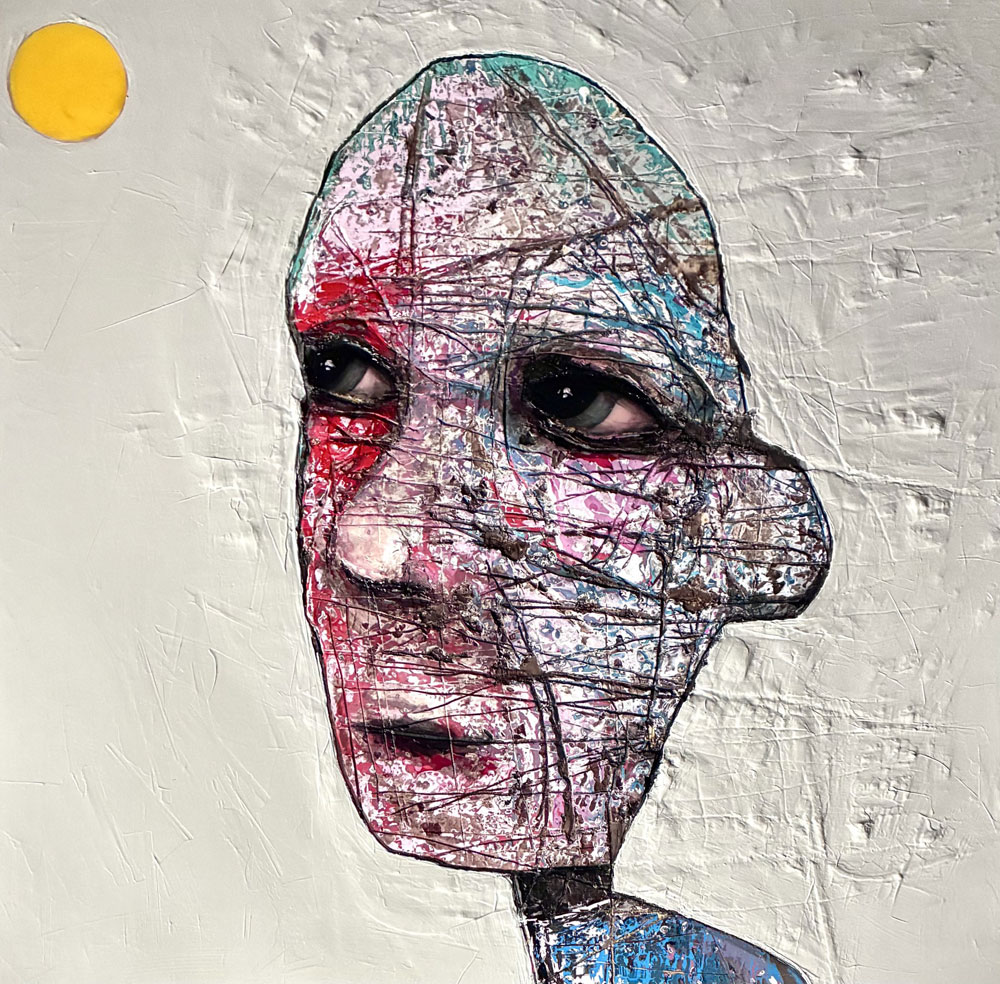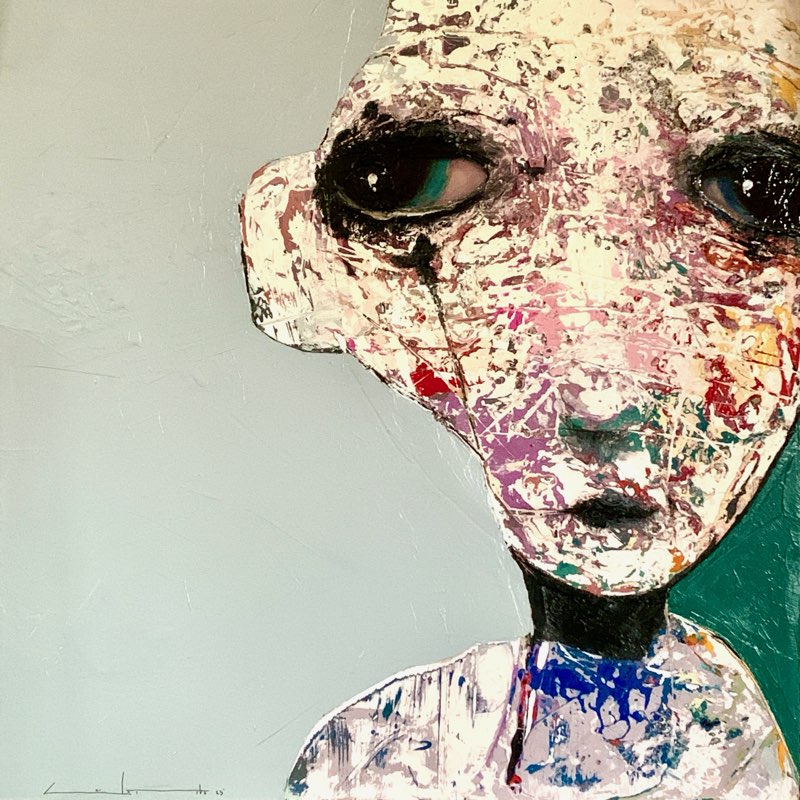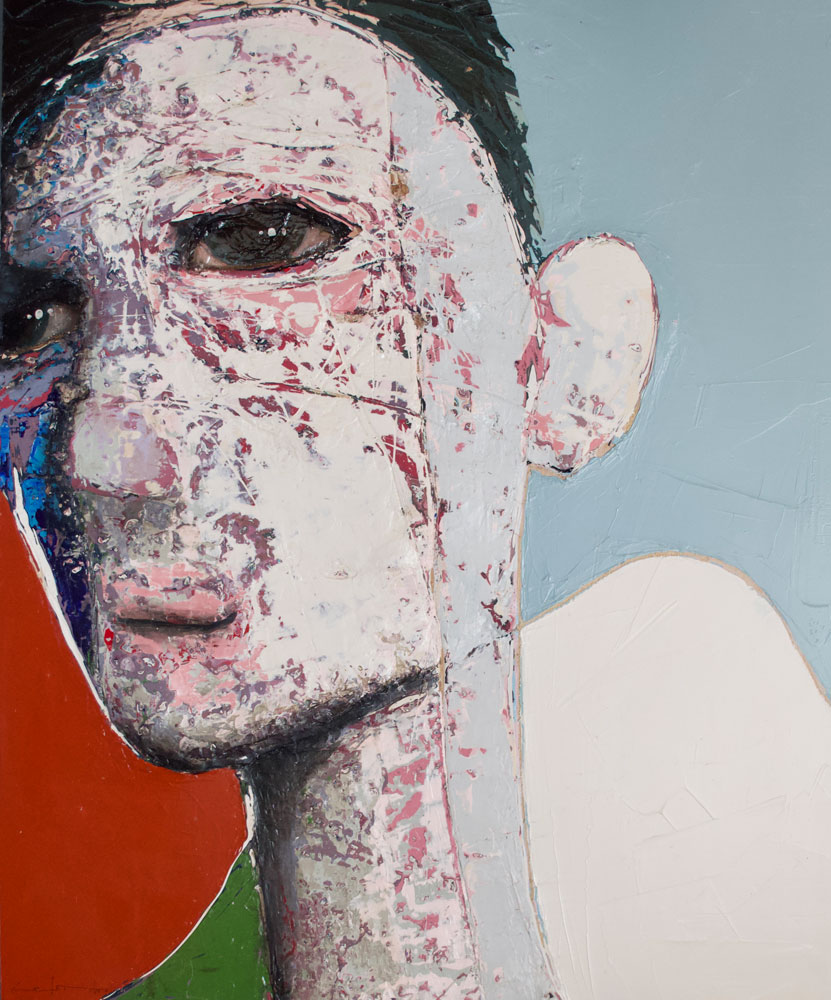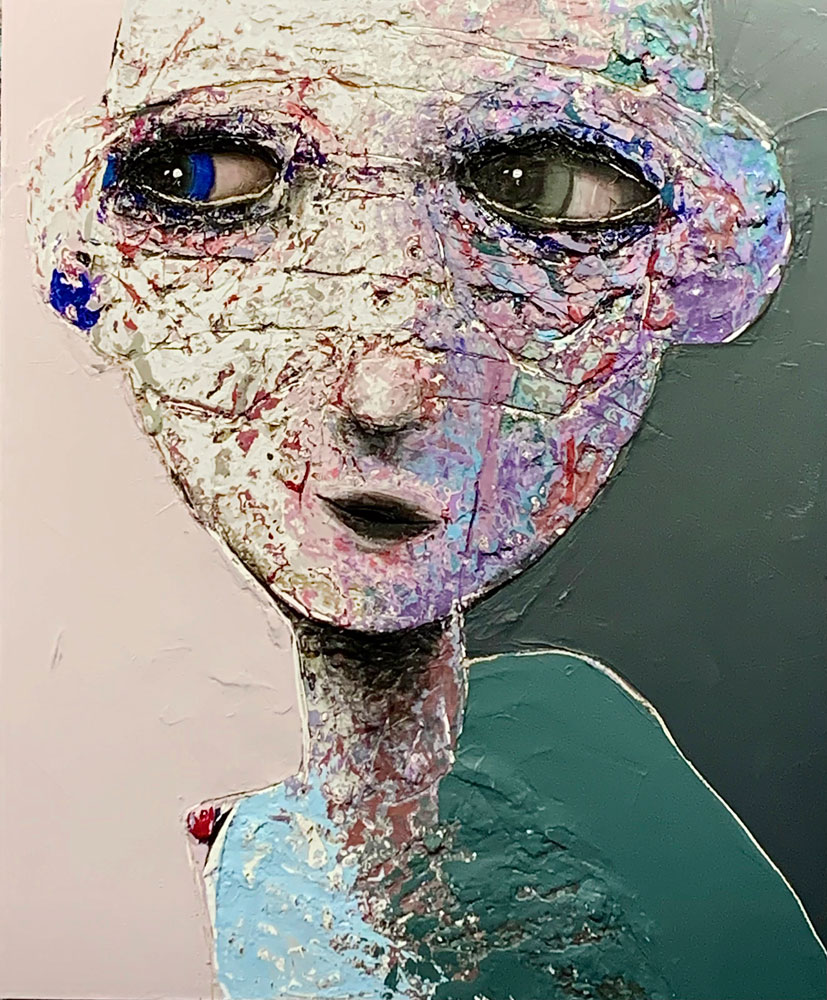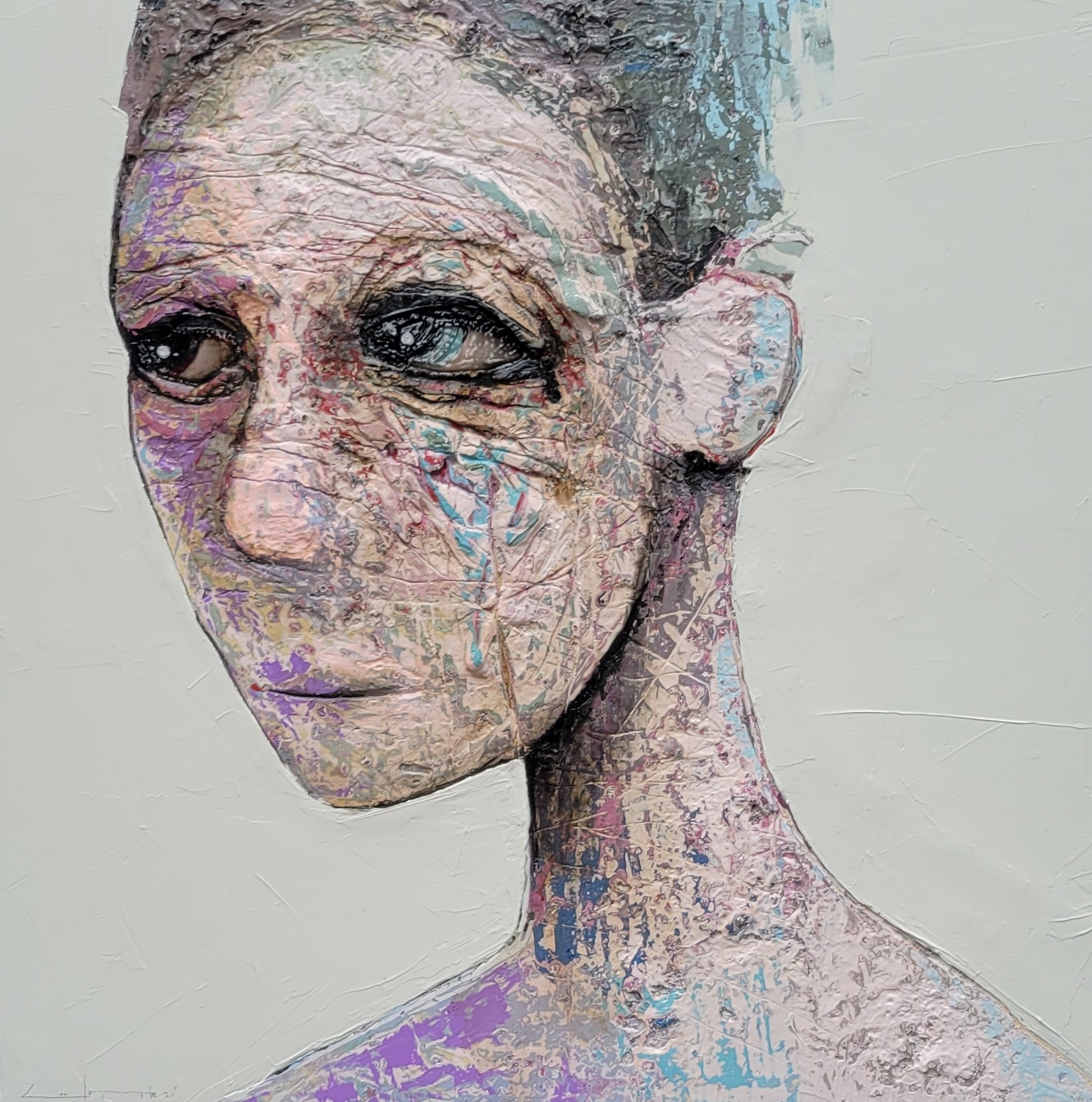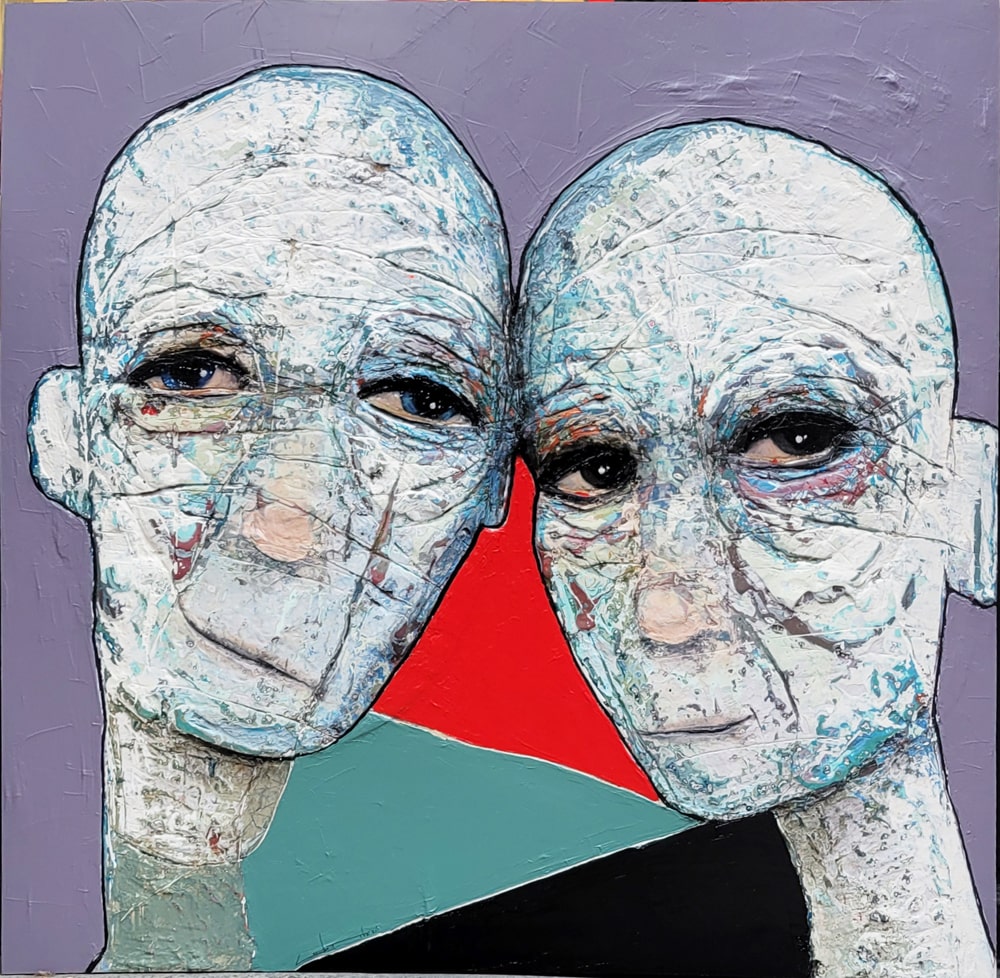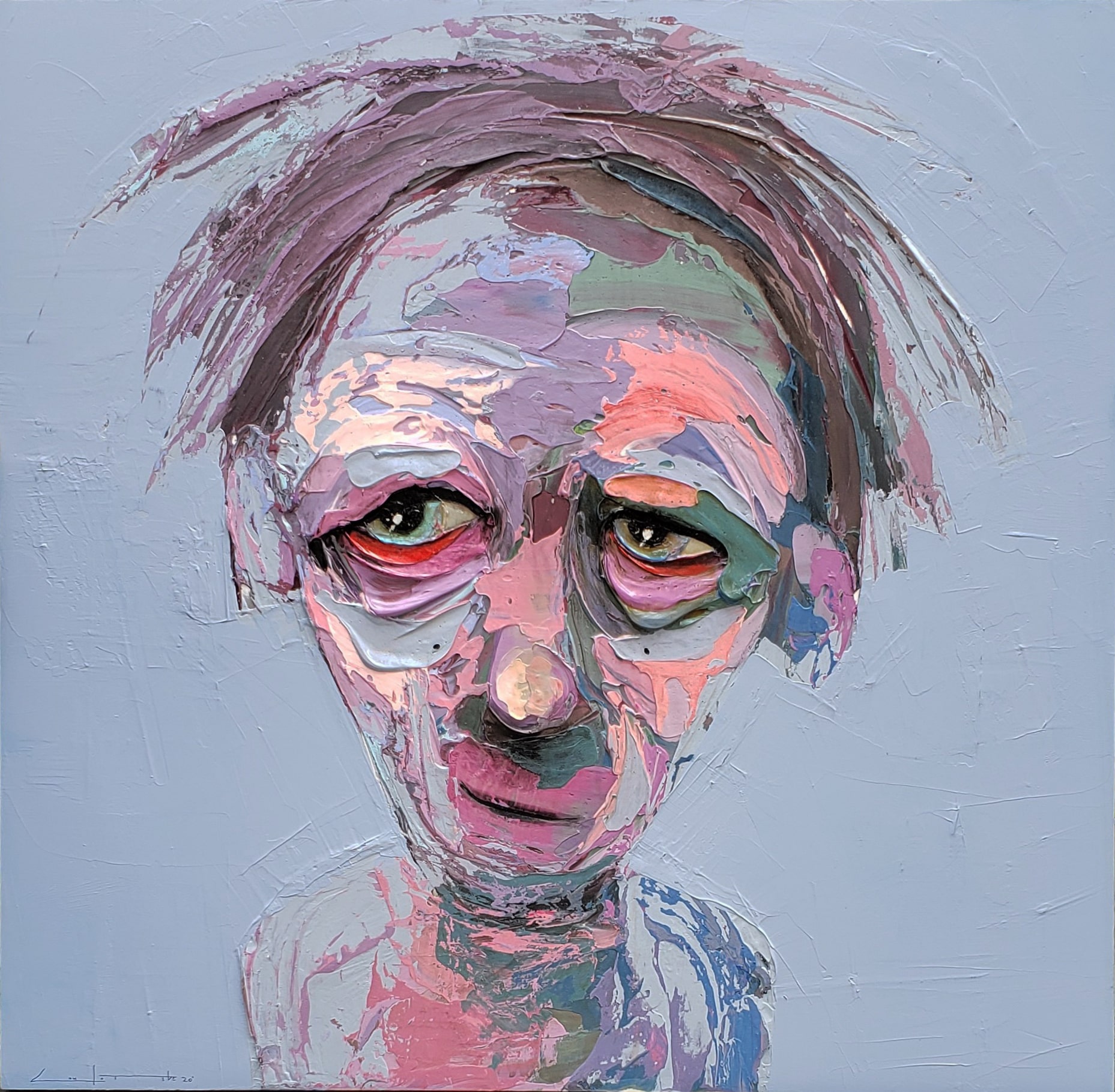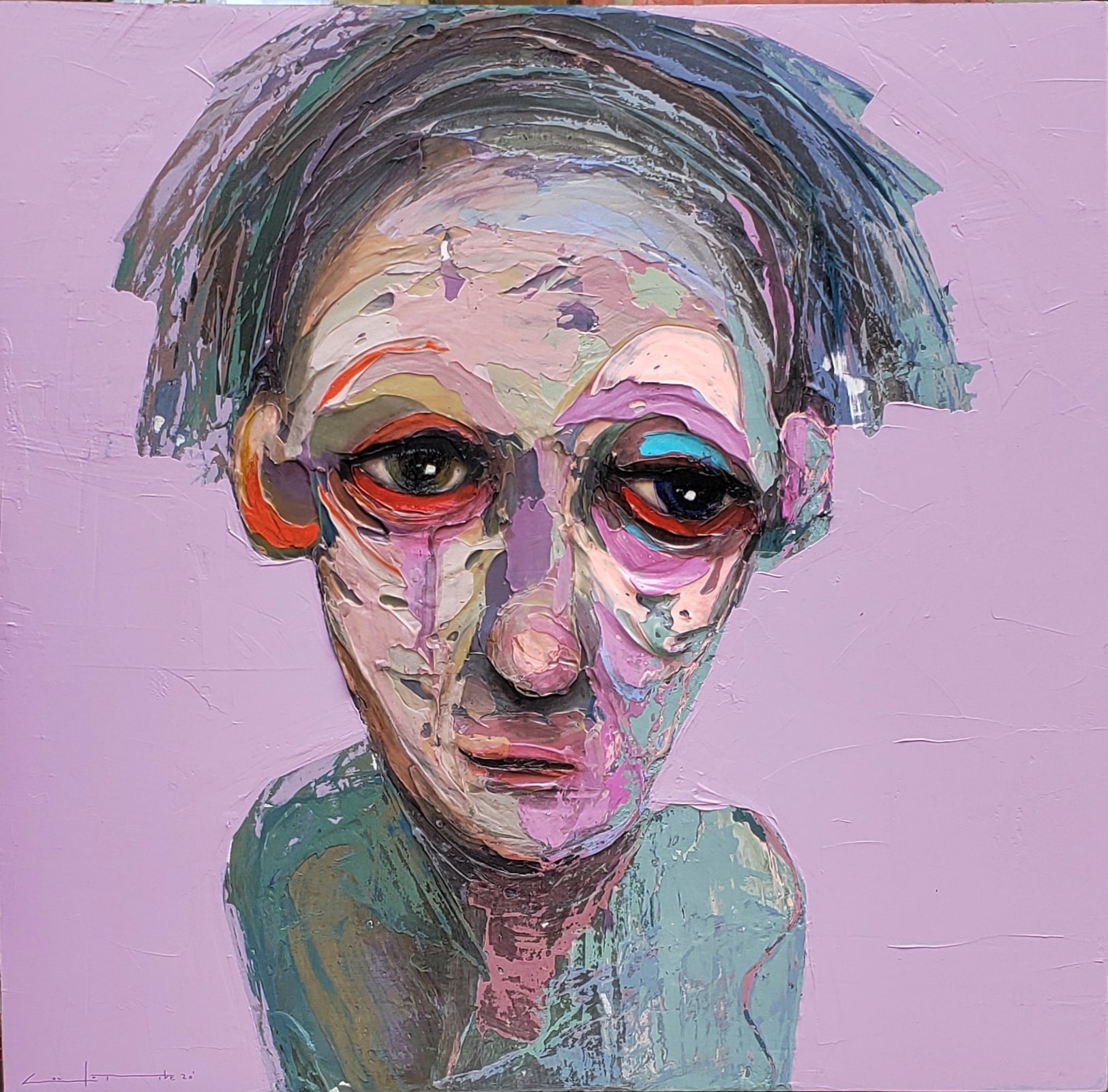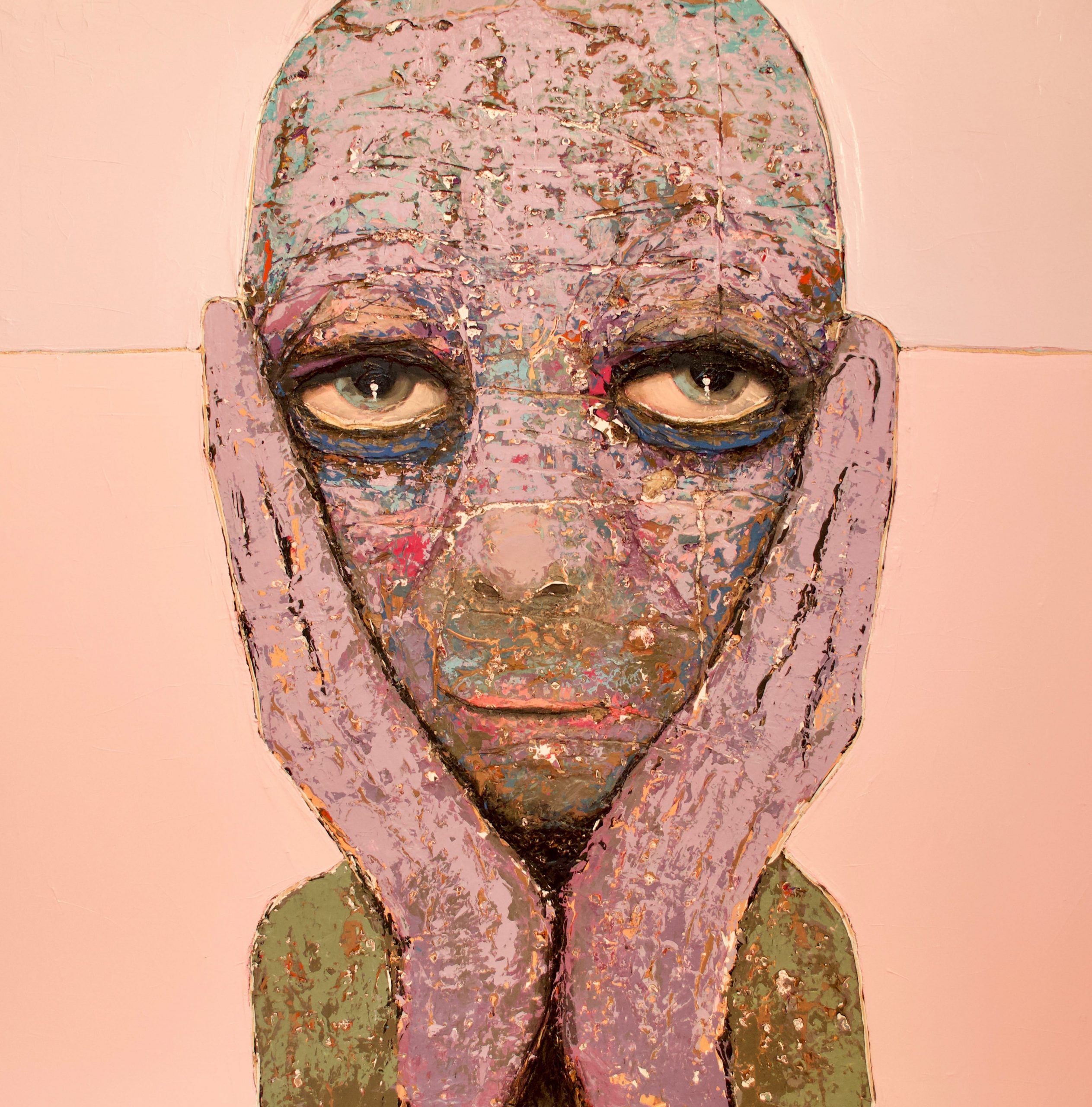artistic approach:
Sylvain Coulombe paints portraits with indigo eyes, one blue, the other black. He depicts people staring in different directions, some gazing upward while others look to their right, and so forth. We see round as well as oblong faces that resemble masks. They reveal little, which compels viewers to imagine the rest. No wonder mystery envelops this art. Indeed both Coulombe’s images and words suggest that truth inhabits a twilight zone.
He creates evolving abstractions, “I always start with an abstract background. I then sit back and take a long hard look at the canvas until I discern a portrait emerging from it. Thereafter the painting indicates the natural course of its development.”
Coulombe applies layer upon layer of paint, and varnish at the end. By superimposing on and repeatedly covering the surface, it undergoes a thorough transformation due to these successive coats of acrylic or resin. “Perhaps art serves as an ongoing means to redeem periods of my past…Painting over what preceded results in a mishmash from which I formulate a new, coherent vision.”
Coulombe’s works reflect a primal instinct harnessed for aesthetic purposes. Self-mastery enables him not only to articulate the meaning of indescribable feelings, but also to make them visible and give them material form. These emotions very gradually find their voice. They do so bit by bit through innumerable strokes of the palette knife, as well as by steady scraping. “First of all I scrape a work-in-progress because I want to remove something, yet at the same time it enables me to discover what lies underneath.”
A singer, composer, sculptor, and architect, Coulombe conducts artistic experiments, of which painting marks just a stage in his journey toward self-understanding. The spectrum between blue and red, light and dark, defiance and seduction, mirrors his multifaceted character. After cathartically allowing himself to fill an entire canvas in one fell swoop of intuition, Coulombe keeps adding layers of paint so as to elaborate an aesthetic, a particular style, a representation…this continues until he once again feels the need to employ that basic technique of archaeology, scraping.
In his studio he paints close-up, then steps far back from the canvas. He stands it against the wall to paint vertically, and later places it horizontally on a table to spread the varnish with a squeegee. Movement thus seems essential to his work, which explains why he changes vantage points, and in quick succession executes several series of images. Innovation drives this artist. “Like a child, we must ever begin anew.”
Coulombe maintains that unless he clears his mind beforehand so as to remove all external referents, he cannot create art. He consequently jogs, walks, and meditates in order to cleanse his spirit. Painting imitates life. The vicissitudes of human existence all too soon steal our birthright of innocence. To reclaim it we must wash away the stains of life and efface its scars. This purification prepares us for the creative process and the fresh challenges that come when we start from scratch. More to the point, we thereby experience a personal renaissance.
Coulombe’s next exhibit at Galerie Blanche illustrates this. Here slashes of red light cut across faces that arise out of scratched surfaces. In this show colours go from strength to strength while opposites abound. “Hot and cold. Serene and distraught. Sunny and rainy.” Coulombe’s compositions bring together such extremes and meld them into a rich tapestry. Never verbose, his works nonetheless speak volumes.
Coulombe, like an archaeologist, leaves no stone unturned in his search for mystery. He pursues it high and low through painting. This quest keeps him in a state of flux as he seeks to balance the constraints of reason and the impetus of creativity.
Nadia Nadège
Translated by Professor Norman Cornett





